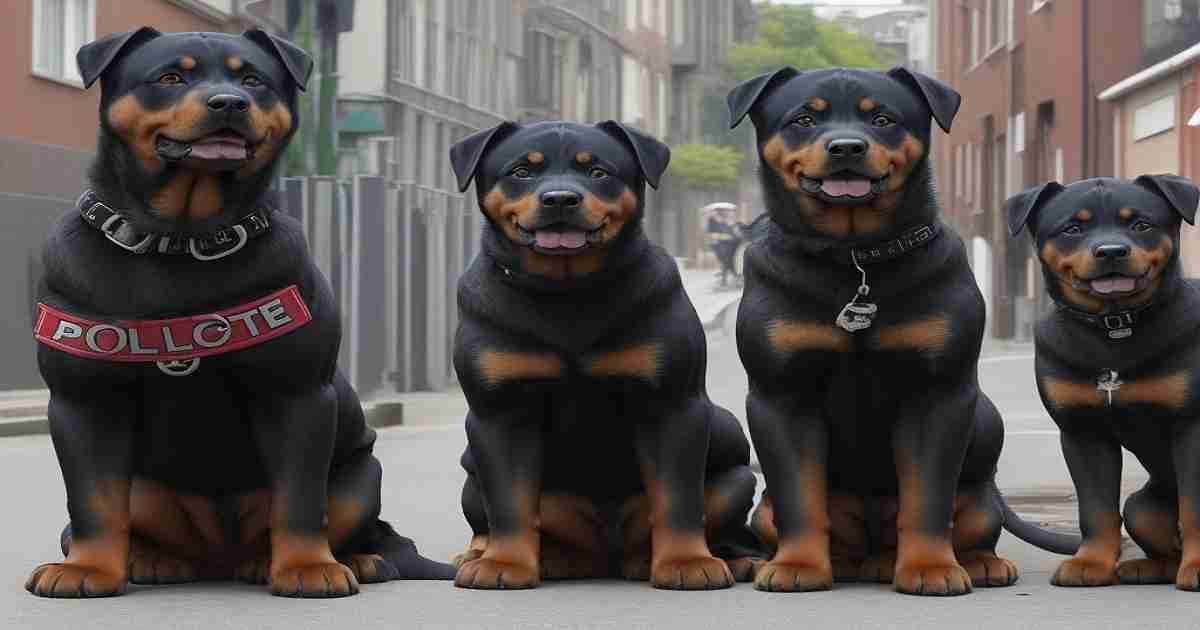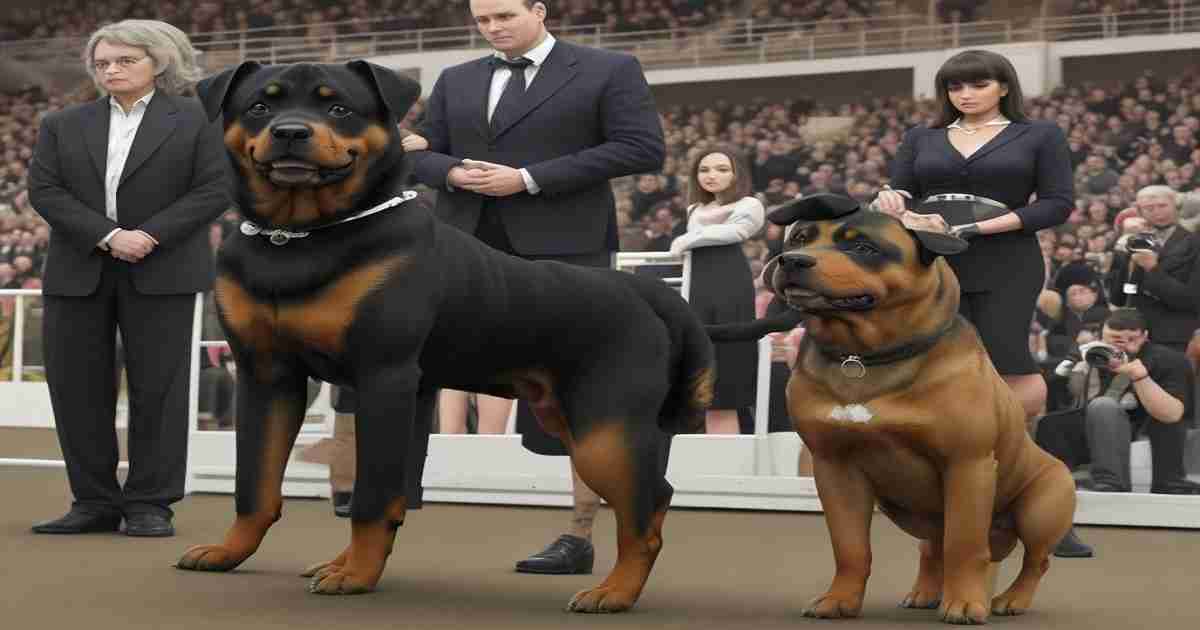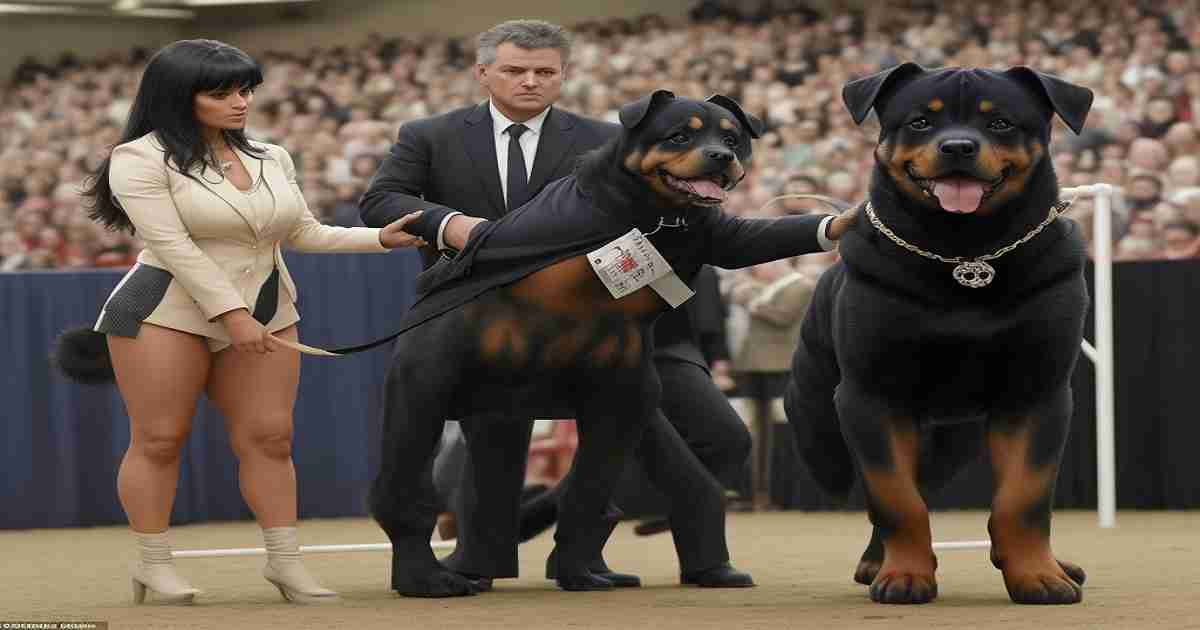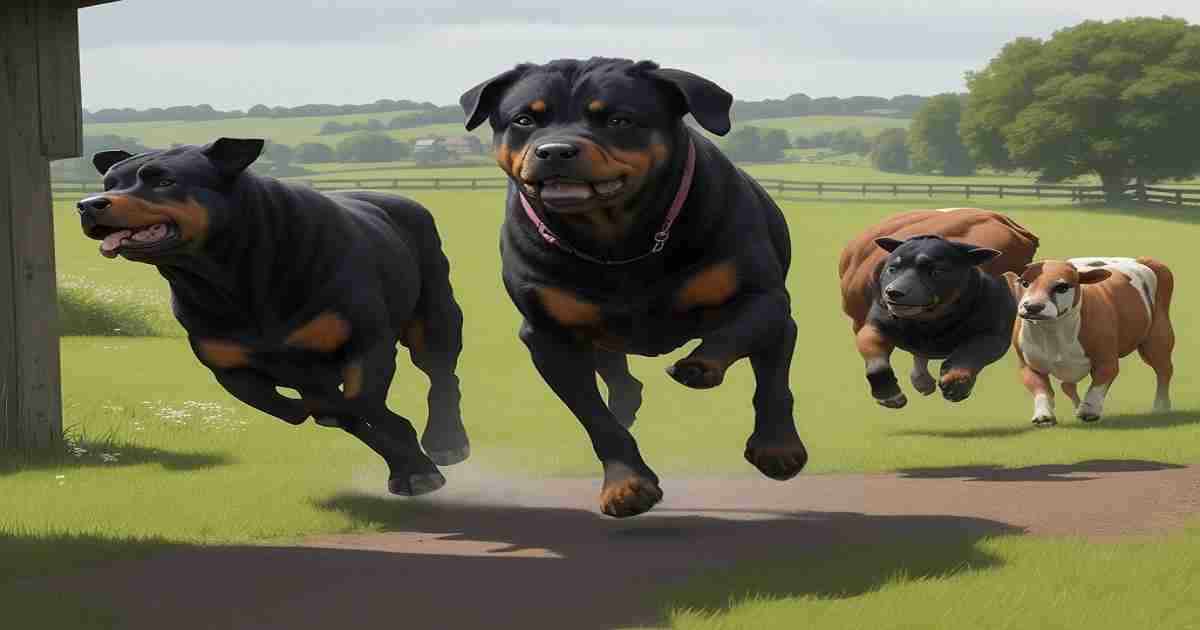The Rottweiler is a noble working breed revered for its intelligence, strength, and devotion.
But those familiar with Rottweilers have likely noticed something missing from these impressive dogs – their tails.
It’s extremely rare to see a Rottweiler with its natural long, whip-like tail swaying as it moves.
This is because Rottweilers undergo a controversial practice – tail docking. But why is tail docking done in Rottweilers?
In this article, we’ll explore the intriguing history behind why do Rottweilers not have tails and delve into the procedures, purposes, risks, and debate surrounding this traditional practice.
Whether you’re an owner, breeder or simply love Rottweilers, understanding why do Rottweilers not have tails provides fascinating insight into this capable working breed.
Bred for Work, Not Wagging
Rottweilers have historically had their tails docked (surgically shortened) for practical reasons.
As a rugged herding and guard dog dating back to ancient Rome, having a long tail could get in the way of work. Or worse – be a liability.
Imagine a Rottie herding cattle with a long, exposed tail just waiting to be stepped on by a 1,000 lb cow! No thanks. I’d dock that thing too.
The American Kennel Club (AKC) Rottweiler breed standards also call for a docked or missing tail.
So anyone showing or breeding Rotties is expected to keep up the traditional look.
But the form has sometimes followed function. Because even though docking is rooted in history, the practice has become controversial in recent years. Let’s dig into the details…
How They Do It: A Precise Puppy Procedure
Tail docking in Rottweiler puppies is generally done between 2-5 days old. The younger, the better, since the cartilage is still soft and the nerves less developed.
The two most common methods are:
- Rubber band ligation. A tight rubber band is placed over the tail to restrict blood flow. The portion beyond the band withers and falls off.
- Amputation. The bottom is surgically shortened with a scalpel, shears, or laser.
Regardless of the method, proper wound care and pain management are a must. Some vets recommend anaesthetizing the puppies during the procedure and prescribing analgesics for pain relief afterwards.
Then it’s a matter of keeping the tail stump clean and watching for signs of infection as it heals. Puppies usually handle docking with no long-term problems.
Why Cutting Tails Causes Controversy
Docking is no big deal. But it doesn’t come without risks and criticism from welfare advocates:
- Pain– No doubt tails are sensitive, so amputation causes acute pain. Some researchers claim that intense pain can last long-term.
- Neuromas– Docking may remove the tail, but nerves remain. Neuromas, or bundles of irritated nerve tissue, may form on the stump leading to chronic pain.
- Infections– Like any surgical procedure, infection is a risk. Close wound care is vital.
- Other Health Issues– Dogs with docked tails may have a slightly higher incidence of incontinence or other issues.
- Lack of Benefit– Many claim docking provides no proven benefit for non-working dogs. Modern life comes with far fewer tail hazards than cattle herding!
- Breed Standards Changing– Prominent veterinary groups have come out against docking. And more kennel clubs are accepting the natural tail.
Times are changing, and chopping a dog’s tail for cosmetic reasons doesn’t sit well with many folks. But old traditions die hard.
Living With a Rottie With a Tail – Tips and Advice
Despite the controversy, some Rottweiler owners keep their dog’s natural tails intact. So what’s it like living with a Rottie with a full-length tail?
- More Maintenance– That adorable rudder needs regular brushing and cleaning. Pay attention to the feathering to prevent matting.
- Injury Risk– Tails can get stepped on, slammed in doors, or over-wagged. Wrap the tail if your dog tends to bang it around and get a “happy tail.”
- Leash Manners– Teach loose leash walking to avoid getting tangled up! And watch that wagging tail in crowds.
- Training– Use the cue “watch your tail” if your Rottie sweeps off tables with its built-in broom.
- The Look– Some think a natural tail ruins the classic Rottie silhouette. But no two tails are alike, and that’s okay! Embrace your dog’s individuality.
Dock or Not to Dock…That is the Question
So when it comes to Rottweiler tails, what’s an owner to do? There are a few factors to consider when making this personal decision:
- Lifestyle– A working Rottie on a ranch may benefit from a docked tail. But for a family companion, the risks likely outweigh the benefits.
- Location– Tail docking is restricted or banned in many countries, so check local laws.
- Preferences– Do you want to adhere to the breed standard for showing? Or do you prefer your Rottie au naturel?
- Vet Advice– Discuss the pros and cons with your veterinarian to make an informed choice.
At the end of the day, it comes down to doing what’s best for your unique dog. The choice is yours!
Wag On! Why I Love Rotties, Tails or No Tails
As a long-time Rottweiler owner, I’ve had dogs both docked and natural. And let me tell you – their wag factor shines through either way!
Like my first Rottie, Bruno. He was a 125 lb lap dog with a docked nub who thought he was a Chihuahua.
And my current girls, Delilah and Roxie? They’ll knock you over with cannonball natural tails that never wag!
Rottweilers are excellent companions because they’re devoted, loyal, and eager to please. They’ll happily wag into your heart – tails or no tails.
So do your homework and make the choice that’s right for you. Bond with that bundle of Rottie joy. Then sit back and enjoy the ride with your unique new best friend!
Conclusion:
Rottweiler tail docking is undoubtedly a complex issue with passionate arguments. While the practice originated for practical working purposes, today, it remains primarily for cosmetic conformity to breed standards.
There are reasonable concerns about the ethics and risks of surgically altering dogs for aesthetic reasons alone.
As we have seen, attitudes are shifting as more vets and owners prioritize canine health and welfare over tradition.
But personal factors like intention, lifestyle, and location still play a role in choosing what’s best for each dog. At the end of the day, responsible Rottweiler owners undertake docking decisions thoughtfully, weighing all aspects to ensure their dogs’ lifelong comfort, safety, and happiness.
FAQs:
Q: Is tail docking painful for puppies?
A: Tail docking causes acute pain, though it is done at 2–5 days old when pain sensitivity is reduced. Appropriate anaesthesia and analgesia minimize discomfort.
Q: Can dock Rottweilers develop health problems?
A: Possible risks include neuromas, faecal incontinence and other issues. But data on long-term problems is limited and contested.
Q: Are Rottweilers born without tails?
A: No, Rottweilers are naturally born with long tails. Tails are surgically shortened after birth according to breed traditions.
Q: Can a Rottweiler work without a docked tail?
A: Many active working and service Rottweilers successfully perform their duties with natural tails intact.
Q: Is a docked tail required for AKC shows?
A: The AKC Rottweiler breed standard specifies a docked or missing tail. Natural tails currently cannot compete.










2 thoughts on “Why Do Rottweilers Not Have Tails? The 5 Shocking Facts You Need to Know.”